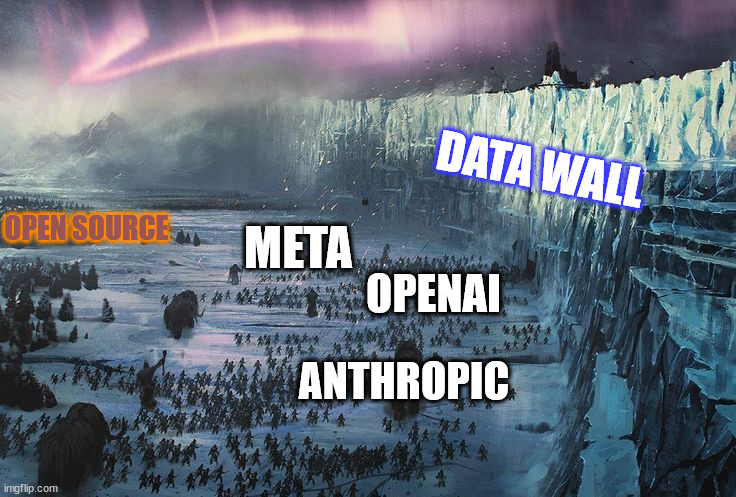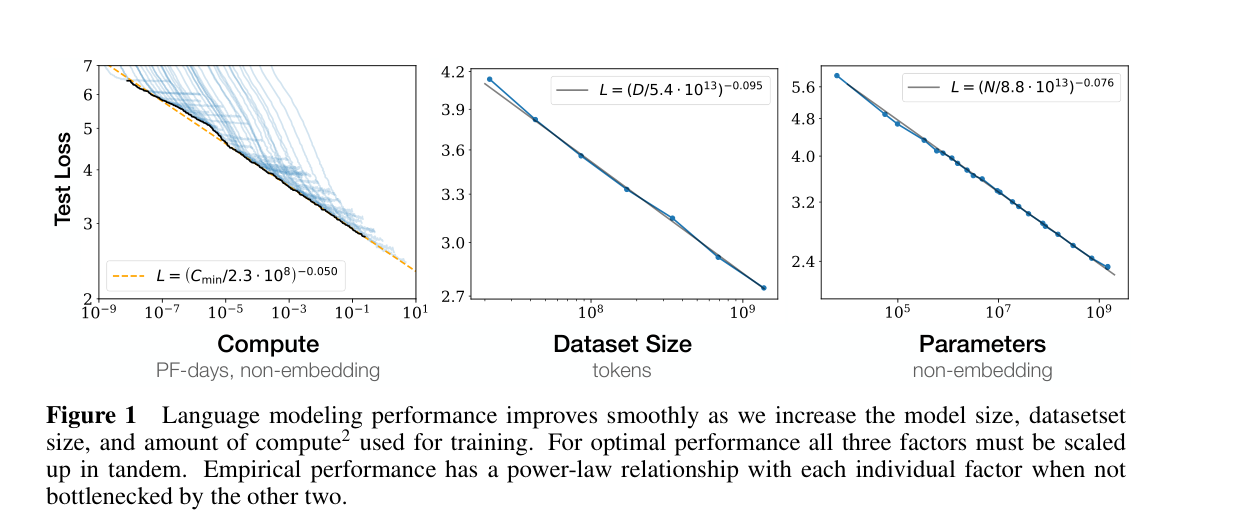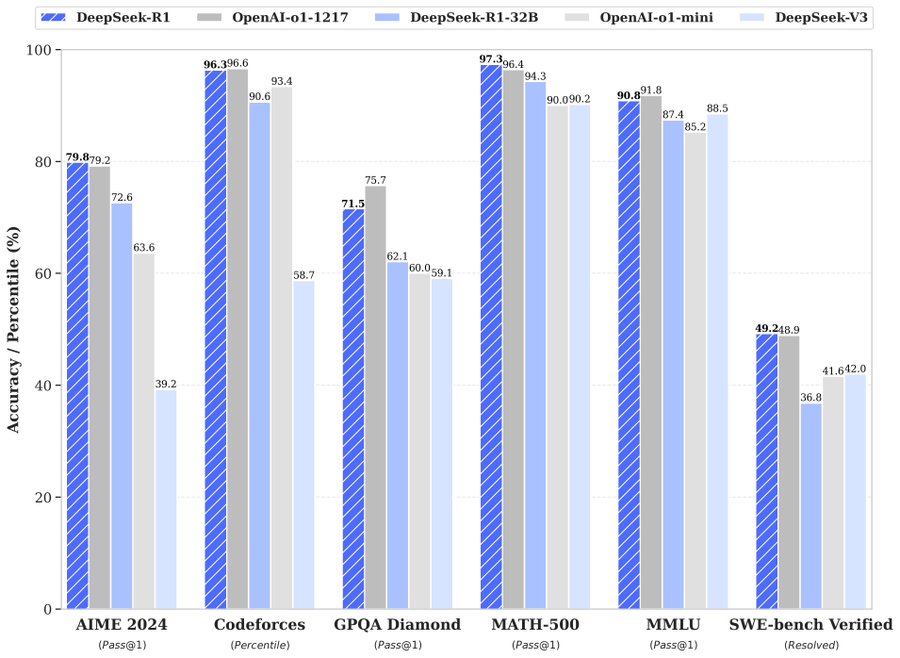The data wall or: How I learned to stop worrying and love the bitter lesson
I was reading Leopold Aschenbrenner's essays, "Situational Awareness". They hold up quite well in spite of being 7 months old, an eternity in the AI space. In that, I saw a mention of the data wall. I'd seen this phrase thrown about a few other times as well. There was a Lesswrong post about it, Alexandr Wang brought it up a few times, and it definitely gave me pause. But what is it?
The data wall is a point where we run out of training data that can yield improvements in LLM performance. In this post, we'll explore what it is, what it isn't, and what it means going forward.

At Telus Digital, we help companies tackle their data needs for ML model training. Our client base runs the gamut from teams building large language models to those working on autonomous vehicle systems. So I needed to figure out if this data wall was real.
Setting Context
Looking back at the pre-ChatGPT era of 2022, model training followed a fairly "straightforward" path: Pretrain → Instruction tuning → RLHF → Final model.
You start by scraping the internet, deduplicate and clean the data, then run it through a model with enough parameters to make your cloud provider wince. What you got was a pre-trained model that could predict the next token with impressive accuracy - but fell flat when asked to be anything resembling a useful assistant.
The transformation from text predictor to chatbot happens through human intervention in two phases. First came supervised fine-tuning, where the model learned from examples of good instruction-following behavior. Then, reinforcement learning through human feedback (RLHF) kicked in - the model would generate multiple responses to prompts, with humans selecting the better options iteratively, teaching the model to align with what we actually wanted from it.
The data wall broadly means that we have/will run out of easily available data to train these models. The scaling laws for language models says that model performance keeps improving with increases in model size, dataset size and the amount of compute used for training. Model sizes are huge right now, with estimates beyond 1 trillion parameters per frontier model. Amount of compute available for training doesn't look like a bottleneck. 500 billion dollars should get you a decent amount, I'd imagine. So of the 3 parameters, it's expensive but directionally straightforward to increase 2 (compute and model size).

Data wall: pretraining
The data part of the scaling laws follows a similar pattern. To keep getting better models, we need to keep increasing the amount of data used. But we have exhausted our stores of easily available data for training LLMs. All model builders have all scraped and used CommonCrawl, Wikipedia, textbooks and reddit.
We don't have any more large scale, openly available pretraining data on the internet. The only real lever here is to go create more high quality data that can help LLMs get better. None but the biggest shops can access real human generated content like YT, reddit, twitter and tiktok, which are aggressively API gated.
However, in practice, LLM's can get better by using smaller but high-quality, filtered and cleaned pre-training datasets. For example, there are models pretrained on textbooks that showed surprisingly strong performance.
So the data wall is kind of true in that we don't have much more readily available internet data to throw at model pre-training.
Data wall: post-training
Post training is more interesting. It's changed quite significantly over the last 3 odd years. Details are sparse, not too much gets out to the public. However, the open source community has been a ray of sunshine, sharing code, data and weights and sharing details on the processes followed for training. Allen AI's work on their OlMo and OlMo2 models is especially fantastic. I strongly recommend reading Nathan Lambert for a more detailed explanation of the advances in post training.
Humans play a massive role in the post-training of most LLMs that we see around us. Hundreds of thousands of hours of effort goes into providing feedback that makes the pre-trained model actually usable. This industry is often overlooked and poorly understood.
There are 2 broad ways of doing this:
1. SFT(Supervised fine tuning): Tell the model how to do certain tasks. Here, the aim is to improve a model's performance in a task by giving it a set of question + answer pairs to improve its performance on said task.
2. RLHF(Reinforcement learning from human feedback): For a given question, ask the model to generate 2 responses, and a human decides which answer's better.
In 2022-23, Anthropic and Meta specified how they trained their models to be good assistants. The pipelines looked something like this:

But that was over 2 years ago. The world has changed since then and post training has become increasingly sophisticated. Frontier models share very little information about their post-training processes. Fog of war. Innovations like constitutional AI help encode behavioral constraints, while chain-of-thought approaches improve reasoning capabilities.
(There is well-founded, reasonable speculation that state of the art LLMs generate data that is faster, cheaper, more reliable and generally accurate compared to human preference labelling/instruction tuning)
Plot Twist: Enter DeepSeek
A few days ago, a Chinese lab called DeepSeek dropped a bombshell. They released a model matching OpenAI's o1 and open-sourced it. And their API prices are 25-30x lower than OpenAI's. The open source ecosystem has been giddy with palpable excitement.

It's also claimed that DeepSeek spent only $5 million on the whole process. In a world where companies are spending billions upon untold billions, the price of DeepSeek R1's development is absolutely shattering assumptions. Somewhere, the author of the no-moat memo is doing a victory lap.
How they developed this model is the most interesting part. Instead of throwing more data at the problem, DeepSeek tried something different. They basically told their model "hey, figure it out yourself." They used reinforcement learning - having the model generate answers, checking if they're right, and learning from that process. No humans needed for most of it.
And it worked. Really well. Their first attempt (DeepSeek-R1-Zero) scored better than most humans on the AIME math competition. When they refined the approach with a sprinkle of human guidance (DeepSeek-R1), it matched or beat OpenAI's best models across the board.
So what?
To the problem "How do we get more data to train models?", the answer for a very long time was "Get humans to do it." This spawned an entire industry of labelers and data providers. But the numbers tell another story now. OpenAI is dropping $500B on compute infrastructure through Stargate, Meta plans $40B in 2025 capex. Scale AI - the market leader in data labeling - is hitting $1B in annual revenue. The rest of the labeling industry (Telus Digital, Turing, Roboflow, Labelbox, etc.) adds some more, but the pattern is clear: compute investment is exploding in both scale and speed of growth while data labeling spend doesn’t seem to be exploding in scale.

There is a legendary article from 2019 by Richard Sutton called the Bitter Lesson. It states that the largest lesson we have learned in over 70 years of AI progress is "Simple methods + lots of compute wins over clever human-designed solutions." The evidence keeps piling up - from DeepBlue to AlphaGo, and now to DeepSeek.
Researchers found a door through this supposed data wall. Instead of paying thousands of people to label data, companies like DeepSeek are letting models teach themselves through trial and error. This will accelerate a trend that’s already underway, where the "data for model builders" market is transforming - moving away from large groups of fungible labelers toward small, well-paid groups of experts who don't label so much as guide and steer models at the edge of their capabilities.
For large model builders, their top end models can start providing clear, well reasoned chains-of-thought that can be further used to improve their models. Compute matters even more now. If DeepSeek could do this with $5 million in reinforcement learning, what can OpenAI and Anthropic and Google do with billions of dollars?
Expert markets
This shift is already impacting data labeling. While mass data labeling is declining, expertise in areas like software engineering, math, languages and law is becoming crucial. The alpha isn't in having more labeled data - it's in having the right experts who can understand where models fail and provide targeted, high-quality feedback. Expert marketplaces will be the new meta, where model builders can pick and choose the expertise they want for improving their models. This is what we are building at Telus Digital, as fast as we can.
The future belongs to architectures that learn efficiently, not datasets that scale infinitely. Smart money is betting on systems that can identify their own gaps and improve iteratively. The next wave of AI companies will win through learning velocity, not data hoarding. Most importantly, for enterprises, this means that custom, private models trained via reinforcement learning on proprietary userflows are suddenly viable. For startups, domain expertise matters more than data volume.

DeepSeek showed us that models can learn complex stuff through trial and error, with just a bit of expert guidance in the right places. The pessimists were right about one thing: we are hitting a wall with traditional data labeling. But like many walls in AI, we're not so much crashing into it as finding a door right through it.